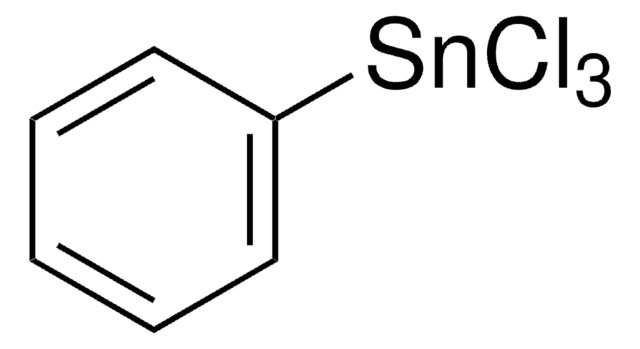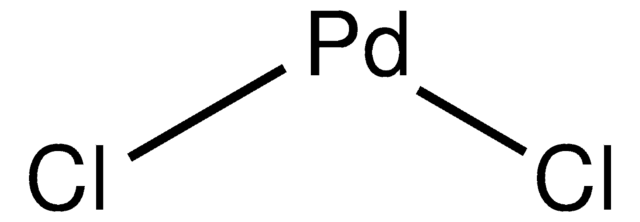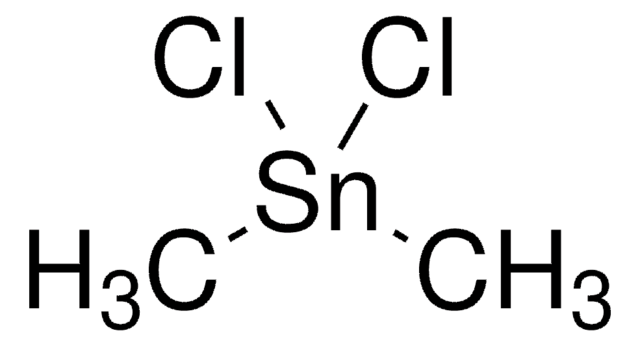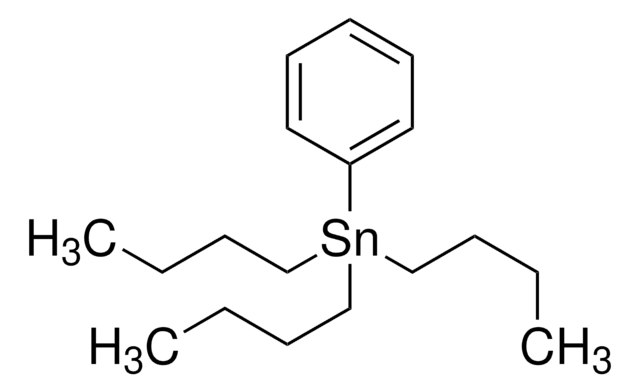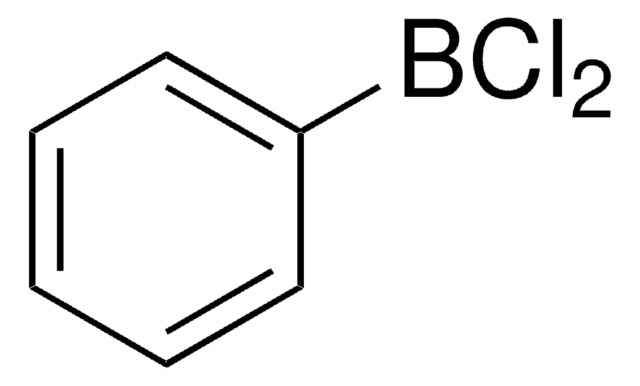T26727
Tetraphenyltin
97%
Synonyme(s) :
Tin tetraphenyl
About This Item
Produits recommandés
Densité de vapeur
14.7 (vs air)
Essai
97%
pb
>420 °C (lit.)
Pf
224-227 °C (lit.)
Chaîne SMILES
c1ccc(cc1)[Sn](c2ccccc2)(c3ccccc3)c4ccccc4
InChI
1S/4C6H5.Sn/c4*1-2-4-6-5-3-1;/h4*1-5H;
Clé InChI
CRHIAMBJMSSNNM-UHFFFAOYSA-N
Vous recherchez des produits similaires ? Visite Guide de comparaison des produits
Mention d'avertissement
Danger
Mentions de danger
Conseils de prudence
Classification des risques
Acute Tox. 3 Dermal - Acute Tox. 3 Inhalation - Acute Tox. 3 Oral - Aquatic Acute 1 - Aquatic Chronic 1
Code de la classe de stockage
6.1C - Combustible acute toxic Cat.3 / toxic compounds or compounds which causing chronic effects
Classe de danger pour l'eau (WGK)
WGK 3
Point d'éclair (°F)
231.8 °F - closed cup
Point d'éclair (°C)
111 °C - closed cup
Listes réglementaires
Les listes réglementaires sont principalement fournies pour les produits chimiques. Seules des informations limitées peuvent être fournies ici pour les produits non chimiques. L'absence d'indication signifie qu'aucun des composants n'est répertorié. Il incombe à l'utilisateur de s'assurer de l'utilisation sûre et légale du produit.
EU REACH Annex XVII (Restriction List)
Faites votre choix parmi les versions les plus récentes :
Déjà en possession de ce produit ?
Retrouvez la documentation relative aux produits que vous avez récemment achetés dans la Bibliothèque de documents.
Les clients ont également consulté
Notre équipe de scientifiques dispose d'une expérience dans tous les secteurs de la recherche, notamment en sciences de la vie, science des matériaux, synthèse chimique, chromatographie, analyse et dans de nombreux autres domaines..
Contacter notre Service technique
